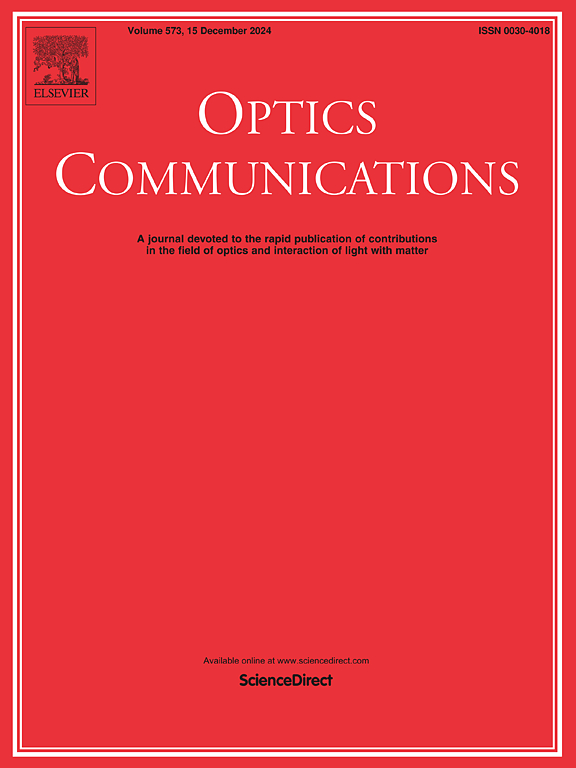用于环境传感的机电可调谐太赫兹t形超材料
IF 2.5
3区 物理与天体物理
Q2 OPTICS
引用次数: 0
摘要
提出了一种具有面对面t形结构的可调谐太赫兹超材料(TSM)。通过改变两个t型结构之间的间隙(g), TSM在TE模式下的可调谐范围为0.87 ~ 0.88 THz,在TM模式下的可调谐范围为0.68 ~ 0.74 THz。在改变两个t型谐振器之间的纵向偏移距离(l)的同时,TSM在考虑共振和半最大全宽(FWHM)的情况下,随着l值的不同呈现出不同的变化趋势。当l = 80 μm时,出现了从0.83 THz到0.87 THz的非线性共振位移。此外,当TSM暴露于不同折射率(n)的周围环境时,TSM在TE模式下出现红移现象,线性度最大为0.990。质量因子(Q)达到最大值为23.17,对不同g值的可调性和灵敏度(S)为79.73 GHz/RIU。随着周围环境的n值相对于q因子的增加,TSM配置的S值呈现相反的趋势。这些特点使得所提出的TSM在可调生物医学、化学检测、环境传感等领域具有更加多样化、分段化的灵活应用前景。本文章由计算机程序翻译,如有差异,请以英文原文为准。
Electromechanically tunable terahertz T-shaped metamaterial for environmental sensing application
A tunable terahertz (THz) metamaterial (TSM) with face-to-face T-shaped structures is proposed. By changing the gap (g) between two T-shaped structures, TSM shows its tunability in the range from 0.87 THz to 0.88 THz in TE mode and from 0.68 THz to 0.74 THz in TM mode. While changing the longitudinal offset distance (l) between the two T-shaped resonators, TSM shows different trends for different l values considering both the resonance and full width at half maximum (FWHM). When l = 80 μm, there exhibits a non-linear resonance shift from 0.83 THz to 0.87 THz. Moreover, when TSM is exposed to surrounding environment with different refractive indexes (n), TSM presents red-shift phenomena in TE mode with linearities of 0.990 at most. The quality (Q) factor reaches maximum value as 23.17, which exhibits the tunability and sensitivity (S) of 79.73 GHz/RIU for different g values. S values of the TSM configuration show the inverse trend with the increase of n value of the surrounding environment against the Q-factor. These characteristics enable the proposed TSM to have a more diverse and segmented flexible application prospect in tunable biomedical, chemical detection, and environmental sensing fields.
求助全文
通过发布文献求助,成功后即可免费获取论文全文。
去求助
来源期刊

Optics Communications
物理-光学
CiteScore
5.10
自引率
8.30%
发文量
681
审稿时长
38 days
期刊介绍:
Optics Communications invites original and timely contributions containing new results in various fields of optics and photonics. The journal considers theoretical and experimental research in areas ranging from the fundamental properties of light to technological applications. Topics covered include classical and quantum optics, optical physics and light-matter interactions, lasers, imaging, guided-wave optics and optical information processing. Manuscripts should offer clear evidence of novelty and significance. Papers concentrating on mathematical and computational issues, with limited connection to optics, are not suitable for publication in the Journal. Similarly, small technical advances, or papers concerned only with engineering applications or issues of materials science fall outside the journal scope.
 求助内容:
求助内容: 应助结果提醒方式:
应助结果提醒方式:


